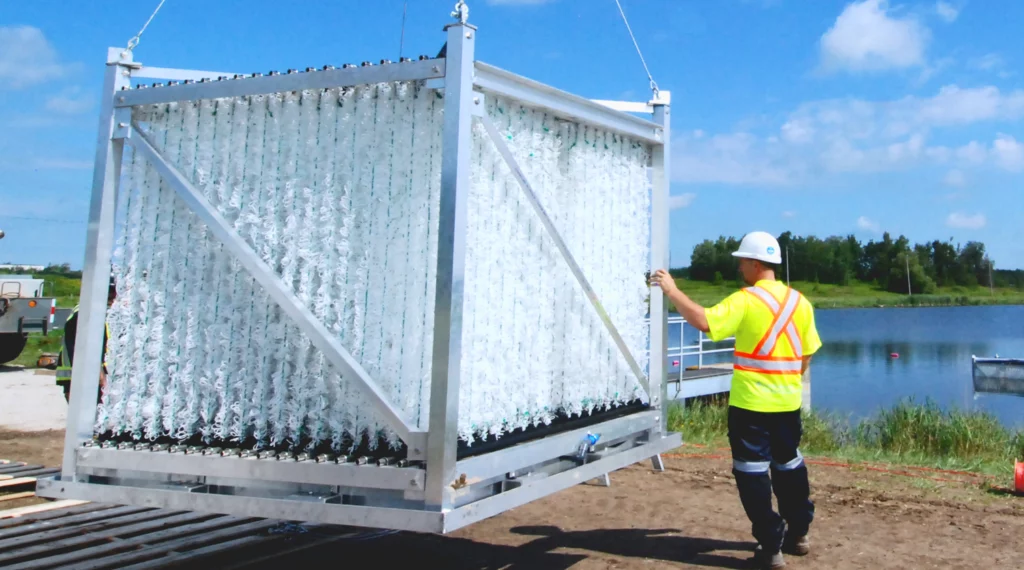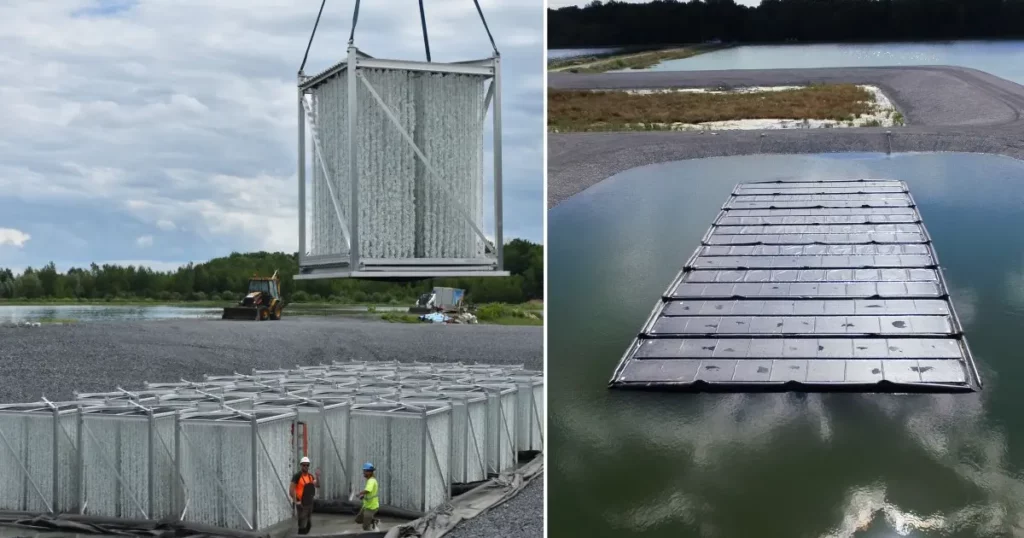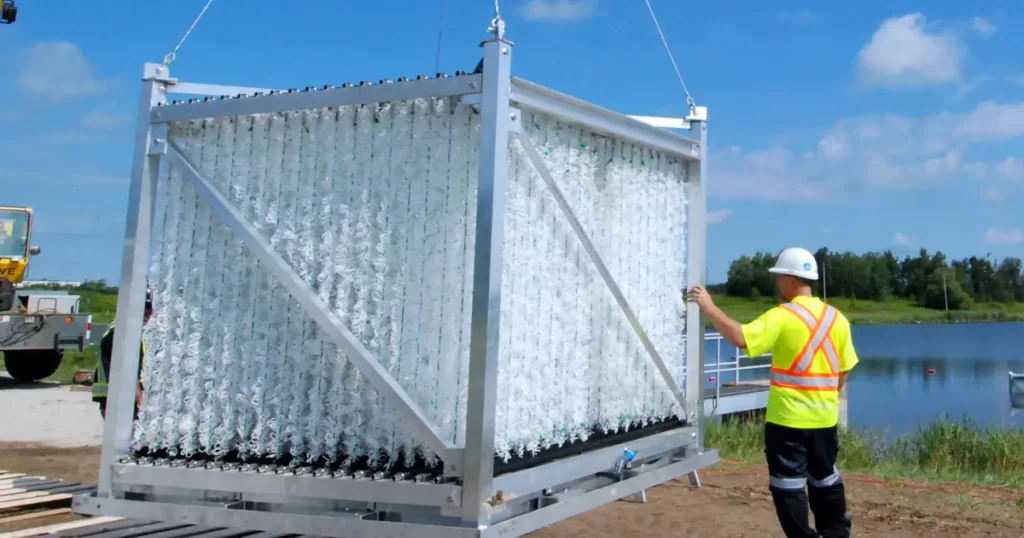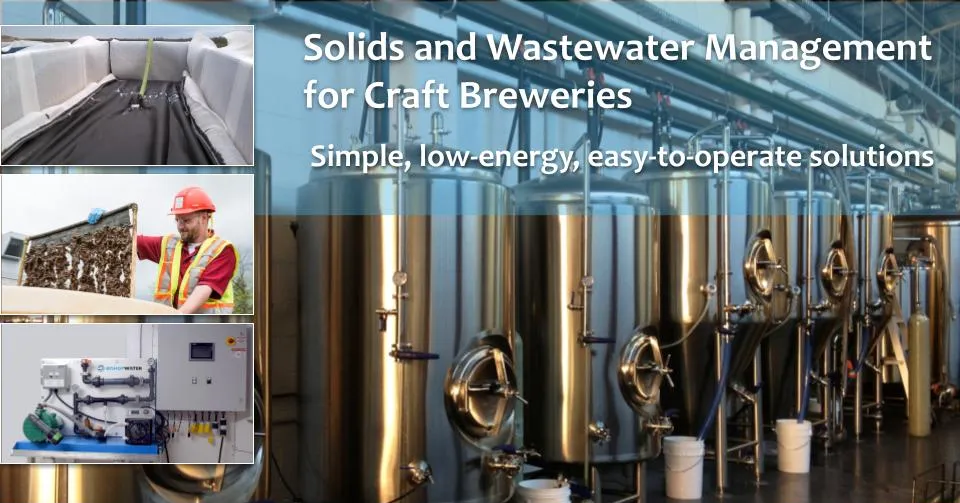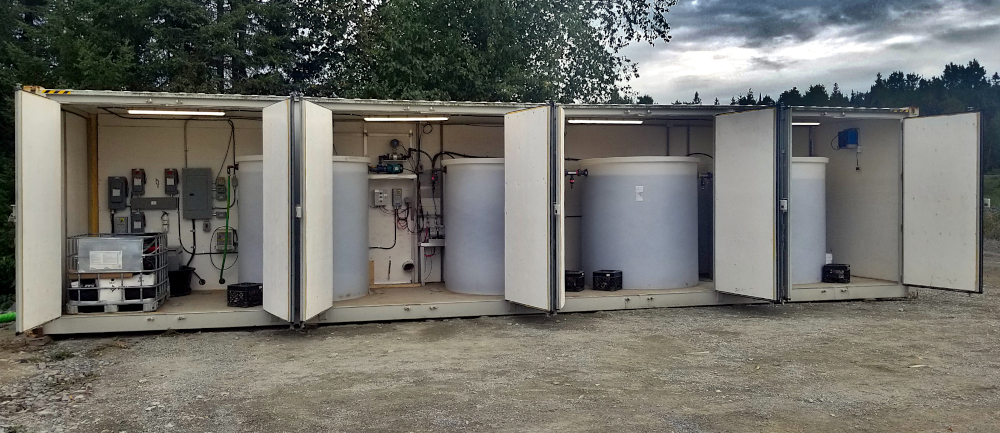ARTICLE
BioCord® Reactors: Ensuring Ammonia Compliance for Canadian Mining Operations
By June 1, 2021 metal and diamond mines in Canada will need to comply with a new lower discharge limit for unionized ammonia. Over 100 mines will be affected by this revision to the Metal and Diamond Mining Effluent Regulations (MDMER), which sets a federal effluent limit of 0.5 mg NH3/L.
To achieve this new regulation, changes may be needed to a mine site’s wastewater treatment system. But the new ammonia target can likely be reached without the need for complex or costly technology upgrades. Many mine sites use simple lagoon systems for wastewater treatment—in part due to their ease of use and low operating costs—and there are upgrade options that can maintain this simplicity and affordability while also improving ammonia removal.
More nitrifying bacteria = better total ammonia removal
A simple, fixed-film biological treatment system such as Bishop BioCord® Reactors can dramatically improve total ammonia removal, without significant changes to the way a lagoon is operated. That’s because a BioCord system is designed to enhance the existing lagoon process rather than add another step or sidestream process to the plant.
Unlike moving-bed or submerged-bed biofilm systems, which require additional tanks or cells, BioCord Reactors can be installed directly into the treatment lagoon to provide a massive surface area on which preferred, naturally occurring bacteria can grow. It’s like a condominium for bacteria; made from densely arranged loops of polymer fibers that are suspended from free-standing frames. This enables BioCord to establish a robust population of nitrifying bacteria that is many times greater than what can be maintained in an ordinary activated sludge lagoon.
BioCord isn’t limited to upgrades only. This modular system can also form the foundation for new wastewater treatment plants that are designed as lagoons, tanks or even temporary containers.
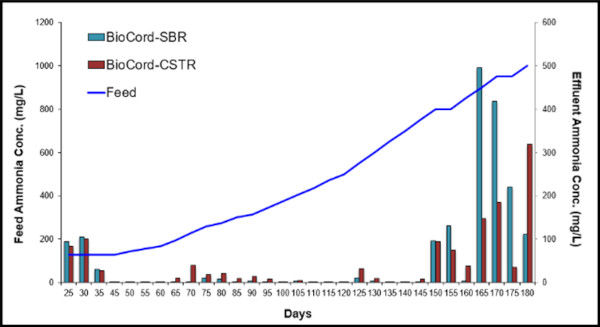
Effluent BioCord concentrations running in SBR (sequencing batch reactor) and CSTR (continuous stirred tank reactor) mode.
High oxygen transfer is critical
Each frame is also equipped with a micro-bubble aeration system powered by a low-energy compressor. This design enables the system to achieve high oxygen transfer to the biofilm for a fraction of the capital and operating costs of a typical blower-powered lagoon aeration system. Oxygen is a critical, and often limiting, parameter for nitrifying bacteria to proliferate, so having high oxygen transfer at a low energy cost is a tremendous advantage.
Once operational, a BioCord system acclimatizes and adapts to the range of pH, temperature and contaminants that it may experience in the mine’s wastewater lagoon, including high levels of ammonia, nitrogen and cyanide.
BioCord testing shows that the system can achieve over 99% ammonia reduction in synthetic wastewater concentrations as high as 750 mg/L. Since the system is modular, the system can be sized to meet the required ammonia target and quickly expanded if conditions change.

